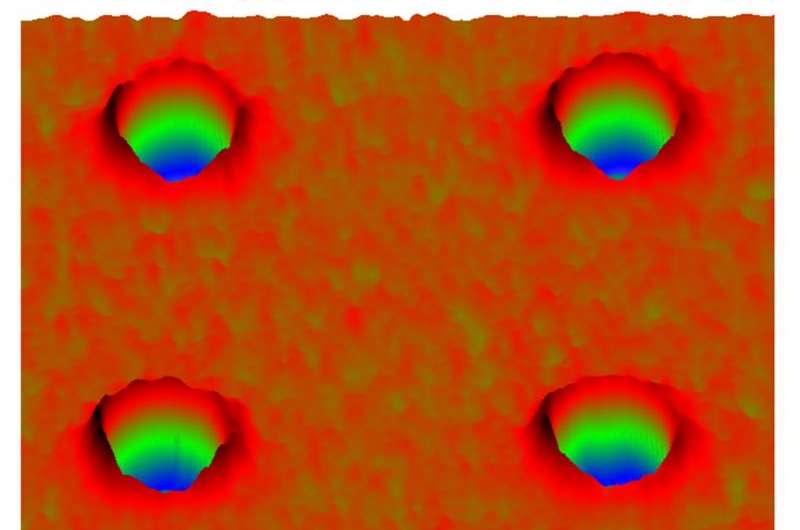New material science research may advance tech tools

Hard, complex materials with many components are used to fabricate some of today's most advanced technology tools. However, little is still known about how the properties of these materials change under specific temperatures, magnetic fields and pressures.
Researchers from LSU, Fudan University, the University of Florida and the Collaborative Innovation Center of Advanced Microstructures in Nanjing, China, conducted research on materials that separate into different regions through a process called electronic phase separation, which is poorly understood. Their research advances the understanding of how these materials can be manipulated without having to discover new materials, change the chemical concentration or apply external magnetic fields.
Their research was published in the Proceedings of the National Academy of Sciences.
The researchers manipulated a steel gray mineral called manganite, which is used to build magnetic hard discs in computers. They created holes, or antidots, in thin films of manganite. It was discovered that the edges of the antidots were magnetic.
"The discovery of the magnetic edge states on the antidots made this work possible. Nobody had ever seen this before," said LSU Physics Professor Ward Plummer, a co-author on the study.
The magnetic phase state at the edges of the antidots raised the metal-to-insulator phase transition temperature of the manganite film. The researchers were able to replicate this through simulations.
"People have really tried to increase the temperature and reduce the operating field or tried to change the substrate or chemical composition. But we find this new approach with antidots to be quite useful," said Jian Shen, head of the Department of Physics at Fudan University and a co-author on the paper.
"What you really would like to do is get this temperature above room temperature, so you can switch the material by using a magnetic field," Plummer said.
More information: Manipulating electronic phase separation in strongly correlated oxides with an ordered array of antidots, Kai Zhang, 9558–9562, DOI: 10.1073/pnas.1512326112
Journal information: Proceedings of the National Academy of Sciences
Provided by Louisiana State University





















